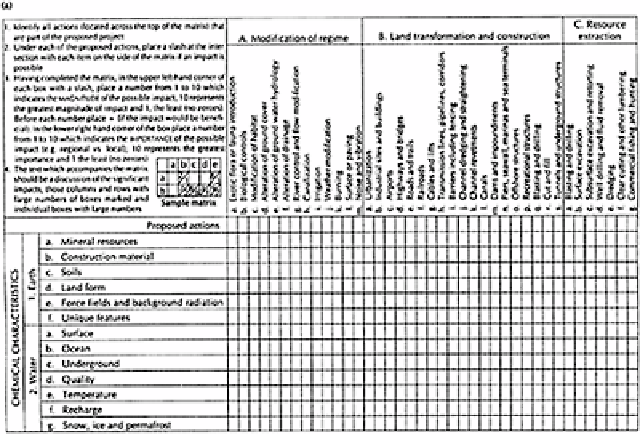Environmental Engineering Reference
In-Depth Information
not be done because the matrix does not assign weightings to different impacts to reflect
their relative importance (Clark et al. 1979).
Weighted matrices
were developed in an attempt to respond to some of the above
problems. Importance weightings are assigned to environmental components, and
sometimes to project components. The impact of the project (component) on the
environmental component is then assessed and multiplied by the appropriate
weighting(s), to obtain a total for the project. Figure 4.13 shows a small weighted matrix
that compares three alternative project sites. Each environmental component is assigned
an importance weighting (a), relative to other environmental components: in the example,
air quality is weighted 21 per cent of the total environmental components. The magnitude
(c) of the impact of each project on each environmental component is then assessed on a
scale 0-10, and multiplied by (a) to obtain a weighted impact (a×c): for instance, site A
has an impact of 3 out of 10 on air quality, which is multiplied by 21 to give the weighted
impact, 63. For each site, the weighted impacts can then be added up to give a project
total. The site with the lowest total, in this case site B, is the least environmentally
harmful. However, the evaluation procedure depends heavily on the weightings and
impact scales assigned. The main problems implicit in such weighting approaches are
considered further in Chapter 5. Also, the method does not consider indirect impacts.
Figure 4.12
(a) Part of Leopold
Matrix; (b) Leopold Matrix elements.

Search WWH ::

Custom Search